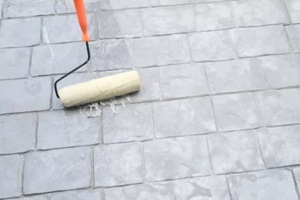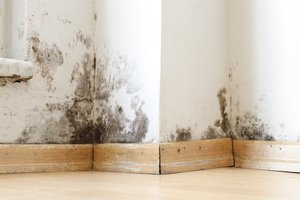 New Jersey is home to heavy rainfall, deep snow, and sometimes even the aftermath of hurricanes off the East Coast. This intense, fluctuating weather can leave structures compromised, both from sudden storm damage as well as more insidious, long-term changes that threaten the integrity of the building.
New Jersey is home to heavy rainfall, deep snow, and sometimes even the aftermath of hurricanes off the East Coast. This intense, fluctuating weather can leave structures compromised, both from sudden storm damage as well as more insidious, long-term changes that threaten the integrity of the building.
Many owners opt for NJ commercial waterproofing solutions to protect their investment in their business structures. However, they may discover that months or years later, the building is still experiencing damage associated with moisture, even after waterproofing has been applied. How can this happen?
Here is an explanation of common New Jersey waterproofing failures and solutions so that you can feel confident in the longevity of your structure should you invest in waterproofing.
Can Waterproofing Fail?
In short, yes—waterproofing can fail for a variety of reasons. Some types of waterproofing are more prone to failure or insufficiency than others; for instance, inherently waterproof materials such as specially formulated cement repel moisture due to their innate molecular structure. Thus, this material prevents water intrusion through the cement, and failure is not a concern.
However, every building will include joints, gaps, seams, and ridges that must be protected from water, and these areas are always prone to compromised protection. Expertly installed waterproofing can keep these vulnerabilities secure, but some factors are also in your control as a building owner.
The most common reasons why waterproofing may fail include:
Incorrect or Inexperienced Installation
Waterproofing should always be installed by a professional. However, the expert you choose makes a significant difference in the end product. Inexperienced installers or those who are rushing through a job may misapply the waterproofing method selected for your building.
This could leave patches of material unprotected or, worse yet, trap moisture underneath the waterproof barrier, where it cannot escape and continues to do damage. Installers who do not put in the effort to properly prepare the substrate for waterproof installation or apply the material incorrectly can leave your building vulnerable to damage.
The best way to fix this issue is to partner with experts who have years of experience in waterproofing—not a company that performs this task on the side.
Improper Waterproofing Method
Another reason that waterproofing may fail is that the incorrect method has been selected for an incompatible building.
For instance, selecting cementitious waterproofing on a flat rooftop that is exposed to direct sunlight all day is not a wise choice, as this material is not UV resistant—nor is it flexible, which means that a flat roof with pooling water will quickly cause the coating to break down.
Multiple waterproofing methods exist, each of which is suited to certain types of buildings, materials, and environments. Solving failed waterproofing may require redoing the process with the correct option.
Insufficient Maintenance
Even the best waterproofing solutions will still need to be maintained over time. In the case of waterproof membranes and sprays, exterior damage such as scratches, chips, and gouges should be repaired quickly, as the applied coating may have been removed when the damage occurred.
For thicker coatings such as bituminous or cementitious waterproofing, regularly check the edges to ensure that the material is still making a complete seal. Not all waterproofing options are flexible, which means they will not expand and contract with temperature changes.
This can cause the edges to pull up over time. Tackling these issues when they are still small prevents larger repairs later and keeps the waterproofing functional.
Water Intrusion from Unprotected Locations
 Those who choose to waterproof only the exterior of their building can still see water damage from interior causes that have not been protected. A plumbing leak on the top floor or puddles on an unprotected roof may seep into the structure, regardless of the waterproofing options that have been applied to the outside walls.
Those who choose to waterproof only the exterior of their building can still see water damage from interior causes that have not been protected. A plumbing leak on the top floor or puddles on an unprotected roof may seep into the structure, regardless of the waterproofing options that have been applied to the outside walls.
For the most comprehensive protection against failure, be sure to invest in waterproofing for both external and internal surfaces. These can be completed at the same time for maximum defense against moisture, often without interrupting business processes.
Get New Jersey Waterproofing Done Right the First Time
Waterproofing is a wise investment in a state such as New Jersey, where the unpredictable weather can gradually wear down even the sturdiest of structures. The experts at Waterproof Caulking & Restoration have been helping commercial building owners throughout the state to secure their investment against water damage for years.
Contact Waterproof Caulking & Restoration to learn more about the types of waterproofing that would work well for your building or troubleshoot reasons why your existing solution is not functioning as intended.
